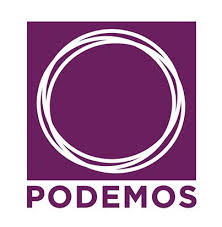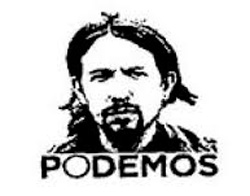On the Sudden Rise of Spain’s PODEMOS Party
Yasser Farres Delgado

HAVANA TIMES — I wish to share a number of comments on Armando Chaguaceda’s post dealing with the Spanish party Podemos (“We Can”).
I think that encouraging this type of debate within what I call “Cuba’s unconventional dissident community” (the new Left and anarchist groups) can be an interesting experience, because Podemos is giving the traditional Left a number of lessons, not only in Europe and Spain, but also at the international level, and this can also prompt reflections on the current course of Cuba’s political system.
I believe Chaguaceda hasn’t truly understood – or does not want to understand – the Podemos phenomenon, not so much because the party’s political platform is vague but because of his own prejudices, which come to the fore when he says that “all of this smells of an anti-political and radical discourse (…)”.
Chaguaceda asks, “how do they intend to manage the State budget and the social consensus needed to impel such an ambitious agenda.” He knows the answer but does not want to accept it as valid: through participative democracy. For the blogger, such a mechanism has been overrated.
If we look at Podemos’ website, we see that the bases of its participative democracy are its “circles”, spaces open to the debate on issues that no traditional left-wing party is today completely open about.
What Communist Party today is openly debating about the LGBTI community, ecology or new feminist movements from a truly radical perspective? Not one, I believe. What we see in Europe and Latin America is the persistence of the hetero-patriarchal and the development-at-all-costs project of the traditional Left. We are seeing this in Ecuador’s Revolucion Ciudadana (“Citizen Revolution”) and, of course, in Cuba. In the best of cases, these issues are dealt with “lightly.”
Podemos’ “circles” have absolutely nothing to do with the base committees of Cuba’s Young Communists League (UJC) or groupings of the Cuban Communist Party (PCC), nor with the “report back assemblies” of its People’s Power Committees. These Cuban structures are vertical, top-down, and inefficient mechanisms. They are very different from the circles, which are horizontal and highly efficient spaces which, in four months, were able to achieve the impressive consensus behind the party’s electoral success.
Participative democracy and transparency are the key to Podemos’ success. All of its finances are available for inspection on the Internet.
Nothing beyond our prejudices justifies the suggestion that this would change if they came to power. Personally, I have no doubts they would manage the economy with the same degree of transparency. There are mechanisms in place, such as the Participative Budgets, to ensure this.
I also don’t think we have any reasons to believe that Podemos will be enthroning someone. If the party presented itself to the electorate with the image of Pablo Iglesias, it was only as part of a communicative strategy. It was a strategy that was in fact more sincere than those employed by the other parties – all have their logos, but what they sold the public was the image of their candidates.

Pablo declared that he accepted the use of his portrait because other party members insisted on it, but that it doesn’t mean he is the party. During a campaign speech in Gijon, Asturias, he explained:
“If a different candidate is elected during the primaries, I will quit the race and put myself at their service. The person elected is the least important thing. It would be bad for me to be elected if I am not able to inspire people, if I am not able to act as an instrument that can mobilize the people and leave its mark in the different neighborhoods, towns, schools and workplaces (…) It’s all the same to me. This business of being in the European Parliament is a drag to me. I’d rather be a university professor than do that. It would be an honor, however, if it helps people get organized. If it amounts to saying in Europe that the problem is not the European Union, that the problem is this Europe of merchants, the Europe led by Merkel, the Europe of financial power, and that there is another Europe out there, that of the citizens of the South that do not want to be a place where Germans spend their vacation, the paradise without labor rights and miserable salaries, people who want a decorous future, then it [the candidacy] would be useful (…)”
The way in which Podemos chose its candidates was made clear. In contrast to the PP, PSOE and IU, Podemos held open primary elections without censuses or preconceived lists. This process went beyond the “protracted assemblies” inherent to gatherings at plazas (which has its value and is needed at a specific point in time).
Podemos is substantially different from the institutionalized Left. It shares many of the ideas of Izquierda Unida (Spain’s Communist Party), but not its methods. Iglesias has said: “IU has decided to give its members the leading role. We have decided to give it to citizens in general.”
In effect, Podemos is left-wing, but its proposals can be grasped by anyone, because the real problem isn’t summed up by Left/Right but by Top/Down. In Spain, there is a growing feeling that politicians are selling out the country. Saying what people are saying (that there is a political class that must be fought) is the reason for the party’s success.
Armando Chaguaceda is wrong to suggest that Podemos is a “project aimed at taking power of organizations and institutions (where any distance from the living legacy of the authoritarian “left” is conspicuously absent)”. From my point of view, the Podemos’ philosophy is much closer to the Zapatistas’ notion of “governing by obeying” than the creed of the PCC, according to which “Fidel is always right.”





